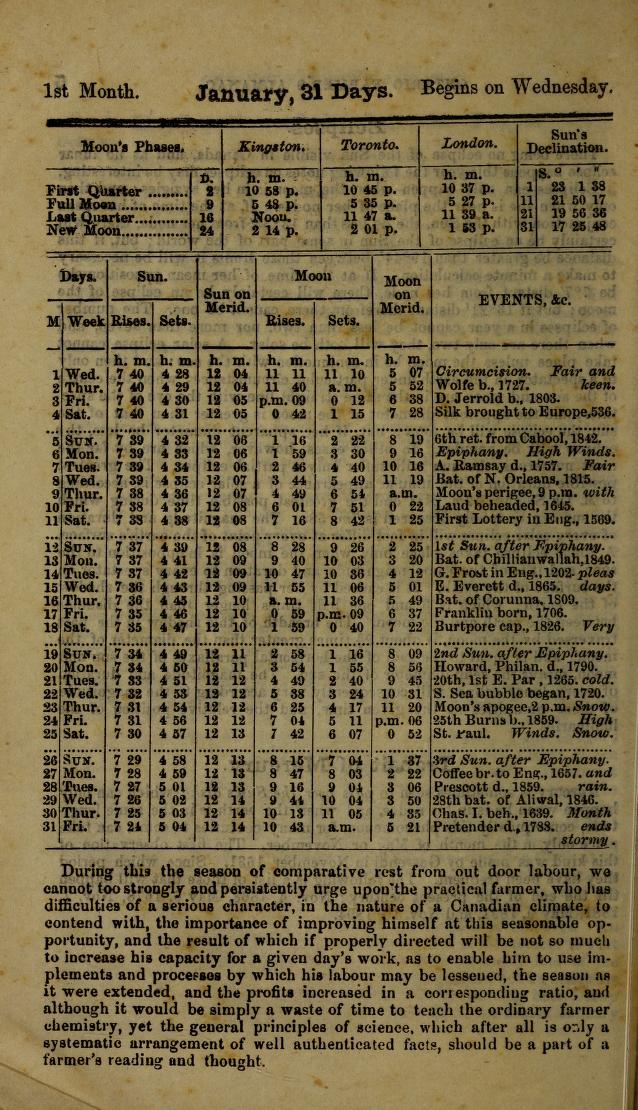Every week, the Fisher Library highlights an item from its vast holdings on the Internet Archive. For the final IA Book of the Week post of 2020, Rachael takes a look at an almanac from our Canadiana Collection.
As 2020 comes to a close, much to the delight of many, it seemed only appropriate to feature an almanac to close out the year. An almanac is an annual compilation book that usually included a calendar with significant dates for the year, holidays, astronomical phenomena, and weather trends. Almanacs had been a long-standing tradition in Great Britain and the American colonies by the mid-18th century and were usually best-sellers for the publishes who printed them. Almanacs were often a local publication, as the astronomical tables were calculated according to the longitude and latitude of a particular region. As well, they would include other information of local interest such as a list of local public officials, postal regulations, and other localized services.
The almanac being featured for this week’s IA Book of the Week is the “Free Trade House Almanac, for the year of our lord 1868.” This almanac was published in 1868 by Shaver and Bell, which according to the cover were importers of dry goods and manufacturers of boots and shoes, both wholesale and retail. The cover also claims that the book is calculated for the meridian region of Toronto, “but will answer with sufficient exactness for the whole of Ontaio.”

The Free Trade House Almanac does not disappoint in terms of what a classic almanac is expected to contain. It begins with a section on chronological cycles and epochs, fixed and movable festivals as well as observed holidays, the length of the seasons, eclipses, and appearances of the planets. According to the almanac, Jupiter would be the morning star until the 4th of July and then the evening star until December 26th. Venus would also have been visible for most of the year at varying times of the day. The second section of the almanac is the calendar. In this section, there is a separate page devoted to each month of the year. The adjacent page to each month is a blank, lined page titled “memorandum for…” whichever month it is. The left hand side of the page contains a number on each line. This page acts as an agenda, as each line is numbered for a day of the month. Information on the month’s dedication page include the phases of the moon and their corresponding dates, what time the sunrise and sunset will occur on each day, and a list of events and holidays. For a few of the months, there is a different name written on a random day of the month in the agenda. On the 29th of May, the name Mary Griffith[?] is written. A couple of other names also appear in subsequent months in the same handwriting
.

Following the calendar, there is a section on The Royal Family, the seats of Canada, the Legislative Assembly of Ontario, as well as some information about the Legislative Assemblies of other provinces.

The almanac concludes with a list of bank branches in Ontario, and a page on what appears to be miscellaneous information such as “why bees work in the dark,” and the “barking of dogs.” Readers of the almanac could use this infomation as a talking point at a party or a conversation starter. Having this information at the end of the book is also a nice, light way to end a book that is packed full of very specific information. An almanac is also a great way to finish out the year, as it gives readers everywhere a glimpse at what's to come.
Thank you to our readers who have been following along all year with Book of the Week and we hope to continue to inspire and educate in the new year.
Rachael Fraser, TAlint student
